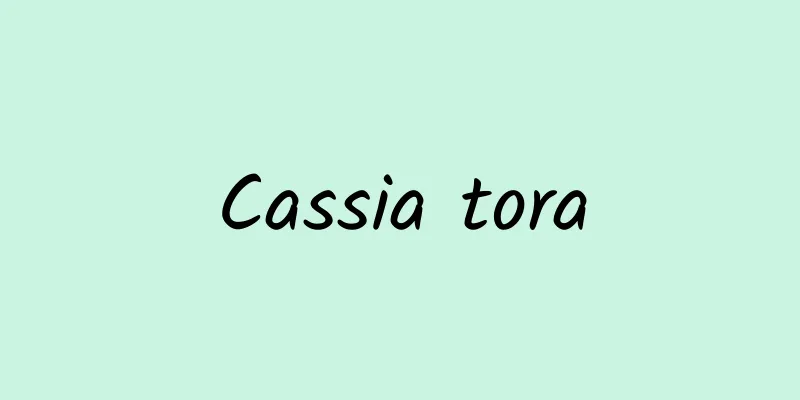Cassia tora

|
Cassia seed originated from "Shennong's Herbal Classic". It is the perfect seed of the legume plant Cassia Cassiatora L. The main production areas are Anhui Province, Guangxi Province, Sichuan, Zhejiang Province, Guangdong Province and other places. It is grown all over the country, both in the north and south. Harvest in autumn, dry, lay out the seeds, and use raw or stir-fry. Specific aliases include Cassia, Cassia grass, Cassia grass seeds, Sheep Ming, Sheep horn, Sheep horn bean, Horse hoof, False mung bean, Horse hoof Cassia, Pure leaf Cassia, Huantongzi, Senecio, Celery Cassia, Wild green pea, Pig bone Ming, Crotalaria bean, Night-blooming bean, Sheep tail bean, Crotalaria blue bean, Fine-leaved Crotalaria bean, Cow dung bean, Obtuse-leaf Cassia, Night-closed door seed, Sheep tentacles seed, False sheep horn seed, False peanut kernel seed, Night-blooming jasmine seed, Wild grass seed. Cassia seed tea is produced under the specific trade name. The best ones are those with round, uniform, brown-green, dry and crystalline grains. The specific prescription name produces cassia seed tea, grass cassia, raw cassia seed tea, fried cassia seed, etc. The herbal cassia and cassia seed tea mentioned in the prescription refer to raw cassia seed tea. It is the product after the residue of pyraclostrobin is removed and used as medicine. It focuses on moistening bowels and intestines, clearing liver fire and dispersing wind. Fried Cassia Seed is also known as Fried Cassia. To make pure cassia seed tea, use slow fire to stir-fry it as medicine. It has the effects of nourishing the kidney, strengthening yang and clearing eyes. It is particularly noteworthy that in the Chinese medicinal material market, the seeds of the same plant C. occidentalis L. are also mixed with cassia seed tea as medicine in some areas, called round cassia and round grass cassia. Its seeds are not diamond-shaped and square, so they can be identified. The specific taste of the meridians produces sweet, bitter, and cold. It enters the liver and small intestine meridians. Specific effects: clearing away heat and removing internal fire, moistening the bowels and moistening the stool. It is mainly used to treat red, swollen and painful eyes, photophobia, depression, constipation, hyperlipidemia and hypertension. The specific dosage is 10~15 grams. Identification of Chinese herbal medicines Cross section of the underground stem: The outer layer of Cassia is a thick cuticle with a thin layer. The outer cortex is a row of palisade cells with unevenly thickened walls. There is a brilliant band at the 1/2 and lower 1/3 of the cells; the following is a row of supporting cells, which are slightly barbell-shaped, with thick walls and large intercellular spaces between adjacent cells; the inner side is 6 to 8 rows of nutrient layer thin-walled cells containing calcium oxalate clusters with a diameter of 3 to 10 μm; the innermost row of seed coat cells are neatly arranged, square, and contain calcium oxalate prisms. The plant cells of the endosperm are unevenly thickened and contain mucilage, aleurone grains, melanin, calcium oxalate clusters and droplets. The somatic cells of young leaves contain clusters of calcium oxalate crystals with a diameter of 3~10μm. Cross section of underground stem: There are many calcium oxalate clusters in Cassia tora, with a diameter of 10-19 μm. The walls of some supporting cells are very thickened, and the cells in the nutrient layer are in 5-6 rows. Powder characteristics: Cassia is yellow-brown. The thin fragments of stratum corneum are smooth and completely transparent, and a wavy and tortuous network structure can be seen on the surface. The outer wall of the palisade cells thickens unevenly, and the cells appear polygonal in surface view with thick walls. The supporting body cells are barbell-shaped when viewed from the side, and ring-like or polygonal when viewed from the surface, through which double layers of inscribed circles can be seen on the left and right. The seed coat thin-walled cells contain calcium oxalate prisms. Endosperm vegetative cells are unevenly thickened, equivocal and powdery with clusters of calcium oxalate crystals. The somatic cells of young leaves contain clusters of calcium oxalate crystals with a diameter of 3~10μm. Powder characteristics: The difference between small Cassia and the above species is that there are fewer thin fragments of cuticle, and polygonal network structure patterns can be seen from the surface. In some supporting body cells, no double-layer inscribed circle can be seen on the surface, but a single circle with a bent thin rope inside can be seen. Calcium oxalate clusters are numerous and large, with diameters ranging from 10 to 19 μm. |
<<: Can Di Gu Pi and Licorice cure ringworm?
Recommend
What to do if your eyelids are red, swollen, itchy and peeling
If the eyelids are red, swollen, itchy, and peeli...
The effect of Chinese medicine belly button patch on weight loss
Many people may not know the medicinal value of C...
What should I do if my lymph nodes in my neck are swollen due to inflammation?
As the saying goes, anger is harmful to the body....
Itchy red bumps in groin
Red bumps are bumps that are red in appearance. P...
Causes of pain in the lower left abdomen of women
Women have more physical conditions than men. Man...
How to regulate allergic constitution, daily conditioning methods
Allergy is a common reaction. Many people with al...
What to do if your toes are ulcerated
Currently, there are more and more patients suffe...
Effects and functions of soaking wine with the root of Renzi
The clinical application of Rhizoma Cibotii is rel...
Ganoderma lucidum spore powder uses
I think everyone has heard about how wonderful th...
Medicines to repair the endometrium
The reason why menstruation occurs in women is en...
Clear mucus discharge during late pregnancy
Women's genitals always secrete some strange ...
Symptoms of malaria
When it comes to the disease of malaria, many peo...
I got pregnant after taking ovulation-stimulating Chinese medicine
Many couples often try to prepare for pregnancy b...
How to reduce eyelid swelling from mosquito bites the fastest
The skin tissue of the eyelids is very delicate. ...
What to do if your lumbar spine hurts after sitting for a long time
There is always a group of people around us who w...









